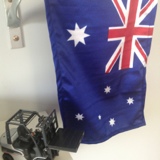Information
-
Document No.
-
Audit Title
-
Client / Site
-
Conducted on
-
Prepared by
-
Location
-
Personnel
-
Corridor
Walk the site before commencing work, ensure all ground hazards are identified such as open pits, trenches and excavations and ensure appropriate controls are applied.
-
Poor - Site not walked, hazards not identified.
Fair - Site walked before commencing work, hazards identified but not demarcate or communicated accurately.
Good - Site walked before commencing work. All hazards identified, demarcated and communicated.
Best Practice - Site walked prior to commencing work. Workers actively engaged in the process, all hazards identified, communicated and understood, including demarcation controls. -
How would you describe the planning and hazard identification of the works?
Assess the structure and equipment load ratings before starting work.
-
Poor - Structure and equipment not inspected.
Fair - Structure and equipment inspected however no rating was found.
Good - Structure and equipment inspected before starting work. All equipment fit for purpose.
Best Practice - Structure and equipment inspected before starting work. Deficiencies identified reported and rectified prior to work commencing. All workers hold correct competencies to conduct works. -
How would you describe the assessment of the structure and equipment load ratings before starting work?
Maintain 3 points of contact
-
Poor - No effort made to maintain 3 points of contact.
Fair - Effort made to maintain 3 points of contact and worker requires additional training.
Good - 3 points of contact maintained.
Best Practice - Works assessed so 3 points of contact can be maintained. If 3 points of contact can not be maintained alternative access equipment arranged. -
How would you describe how 3 points of contact has been managed for task?
Ensure a risk assessment has been carried out and when working more than 2 metres off the ground or where the risk assessment determines that height safety equipment is needed, wear a harness, double check fastenings/clips so that you are attached at all times.
-
Poor - No risk assessment conducted. Height safety equipment not available.
Fair - Risk assessment conducted. Height safety equipment available and being used.
Good - Risk assessment conducted. Height safety equipment available and being used. Checks put in place to ensure equipment attached at all times.
Best Practice - Risk assessment conducted. Height safety equipment available and being used. Checks put in place to ensure equipment attached at all times. Regular inspections planned throughout works by third party to ensure compliance with risk assessment. -
How would you describe the risk assessment process for working at heights for the task?












